Which Japanese conveyor belt sushi chain has the best bintoro sushi?【Taste test】
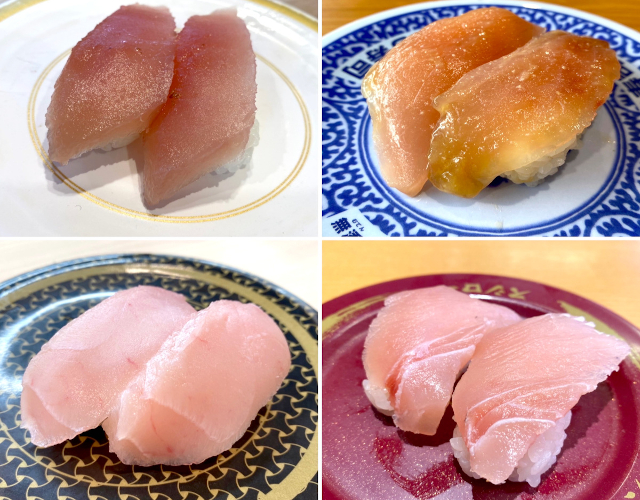
Sharpen your sushi knowledge with an in-depth look at a popular restaurant item.
When it comes to eating sushi in Japan there are so many options to choose from it can be hard to know where to start. Those with experience will often recommend maguro, or bluefin tuna, as a failsafe option, but sushi aficionados will go one step further by recommending certain parts of bluefin tuna, like otoro (extra fatty underbelly) or chutoro (medium fatty underbelly).
Those with even more in-depth sushi expertise might suggest bintoro, which also refers to the “toro” (“underbelly”) of tuna, but this type of sushi comes from the albacore tuna. This tuna largely feeds on sardines, which brings it close to the shores of Japan during spring and summer and also contributes to its high fat content, which turns its flesh from pink to white.
▼ Bintoro is sometimes known as “shiro maguro” (“white tuna“) due to its light colour.
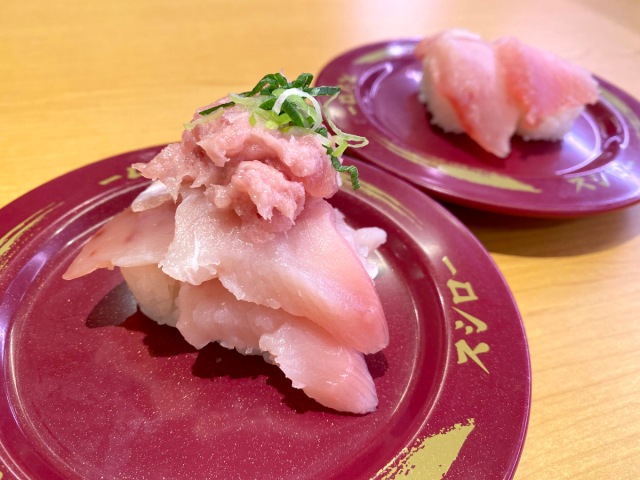
You generally won’t find albacore tuna on the menu at high-end sushi restaurants, as it’s smaller and cheaper than bluefin tuna, but this is exactly what makes bintoro perfectly suited for budget-style conveyor belt sushi chains.
Which chain does it best, though? That’s the question our reporter P.K. Sanjun sought to answer in his latest comparison between the nation’s top four kaitenzushi chains.
▼ The top four, clockwise from top left: Kappa Sushi, Kura Sushi, Sushiro, and Hama Sushi

As always, P.K. visited the four chains on the same day and within a space of around three hours to ensure a fair tasting. So let’s get straight to it by checking out his tasting notes to find out which of the four will win this battle of the bintoros.
● Kappa Sushi (110 yen [US$0.84])
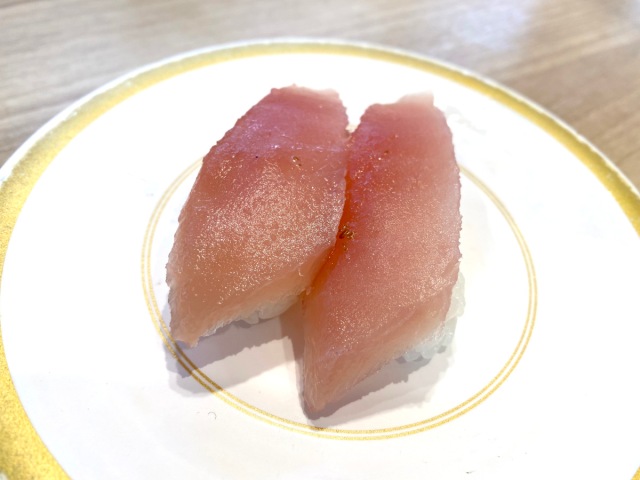
“The amount of fat is just right here, and it has all the hallmarks of a conveyor belt chain bintoro. It was a little watery, but it had a good, standard level of deliciousness. I wouldn’t go out of my way to recommend it, but it’s a standard bintoro that you won’t regret eating.”
● Kura Sushi (110 yen)
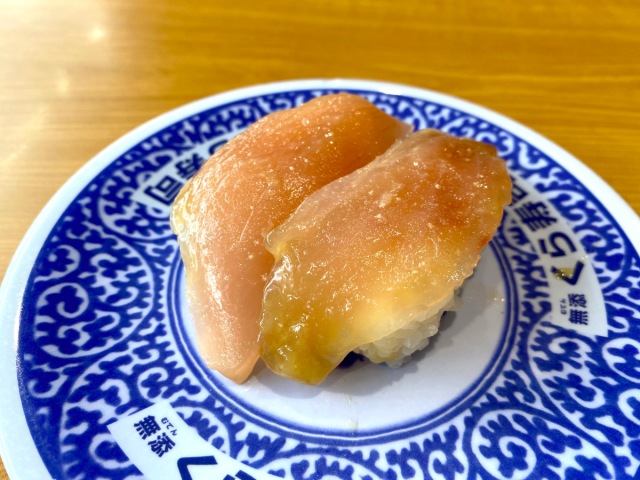
“Kura Sushi didn’t actually have regular bintoro on the day I visited, so I had to make do with their pickled bintoro. The texture of it was so sticky it got stuck in my teeth, but the ginger in it was refreshing and the pickled sauce was quite good. It felt like an ingenious take on bintoro, but this makes it difficult to compare to the others. Still, it was a good standard offering.”
● Hama Sushi (110 yen)
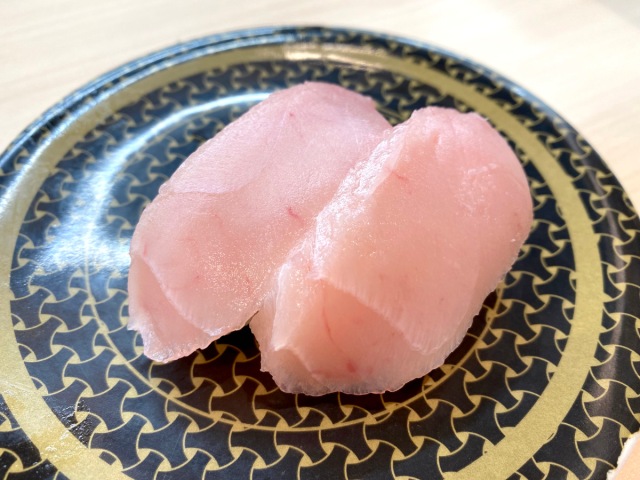
“The wateriness that’s typical of bintoro was nowhere to be seen here, which is a great thing. These were nice thick servings and the fattiness was fantastic. This is definitely a bintoro that you’ll be happy about eating, especially at the cheap 110-yen price point.”
● Sushiro (165 yen)
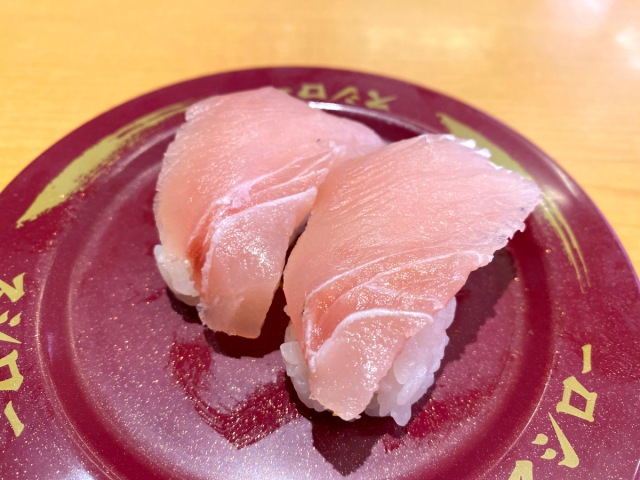
“Like Hama Sushi, this was delicious with no wateriness. I couldn’t find anything negative to say about the thickness of the morsels or their fat content, and the taste was perfect. The flavour, texture and size of these were on par with Hama Sushi, but because they cost 55 yen more, I have to give the win to Hama Sushi.”
So there you have it — both Hama Sushi and Sushiro are the best places to go for tasty bintoro, but if you want to save some yen, Hama Sushi can’t be beat. It’s yet another win for the popular kaitenzushi chain, which is also the recommended port of call for ikura and aburi salmon sushi as well!
Photos © SoraNews24
● Want to hear about SoraNews24’s latest articles as soon as they’re published? Follow us on Facebook and Twitter!
Credit:

0 comments:
Post a Comment